In the realm of public art and landscape design, few elements blend utility with aesthetic appeal as seamlessly as animal benches made from stone. These unique creations are more than just places to rest; they are tangible expressions of humanity’s deep connection with nature, history, and artistic expression. Carved from durable natural stone, these benches often depict animals in a variety of poses and species, offering not only functional seating but also an immersive experience that evokes wonder, nostalgia, and a sense of place.
The integration of animal forms into stone furniture is a practice rooted in ancient traditions, yet it continues to evolve through contemporary interpretations. Whether placed in parks, gardens, city squares, or along scenic trails, animal benches made from stone serve as both landmarks and storytellers. They invite people to pause, reflect, and engage with the environment in a way that transcends the ordinary. This article explores the multifaceted significance of these stone-carved masterpieces, delving into their historical origins, artistic craftsmanship, and cultural resonance.

The Historical Roots of Animal Benches Made From Stone
Ancient Inspirations and Symbolism
The use of animals in sculpture dates back thousands of years, with early civilizations using them to represent deities, spiritual beliefs, and societal values. In ancient Egypt, for instance, sphinxes—hybrid creatures with human heads and lion bodies—were carved into massive stone monuments, symbolizing strength and wisdom. Similarly, in Asian cultures, dragons were often depicted in stone at temple entrances, believed to guard sacred spaces and bring prosperity.
Stone benches featuring animal motifs can be traced back to Roman and Greek antiquity, where public spaces were adorned with sculptural elements that combined utility with symbolism. These early examples often featured mythological creatures or representations of local fauna, serving as gathering points and symbols of civic pride.
In medieval Europe, monasteries and cathedrals frequently included stone seats with carved animals, sometimes used as misericords (small ledges for resting during long prayers). These carvings were not merely decorative; they often conveyed moral lessons or folklore, reflecting the worldview of the time.
Evolution Through Time
As societies evolved, so too did the purpose and design of animal benches made from stone. During the Renaissance, there was a renewed interest in classical themes, and public gardens began incorporating sculptural elements inspired by Greco-Roman art. By the 18th and 19th centuries, with the rise of Romanticism and the appreciation for nature, animal-themed stone benches became more common in landscaped parks and estates.
Victorian-era garden design, in particular, embraced whimsical and fantastical elements, often including benches shaped like turtles, lions, or mythical beasts. These pieces reflected the era’s fascination with the exotic and the natural world, brought closer through colonial exploration and scientific discovery.
Today, while materials and techniques have advanced, the essence of these benches remains unchanged—they continue to celebrate the intersection between human creativity and the natural world.
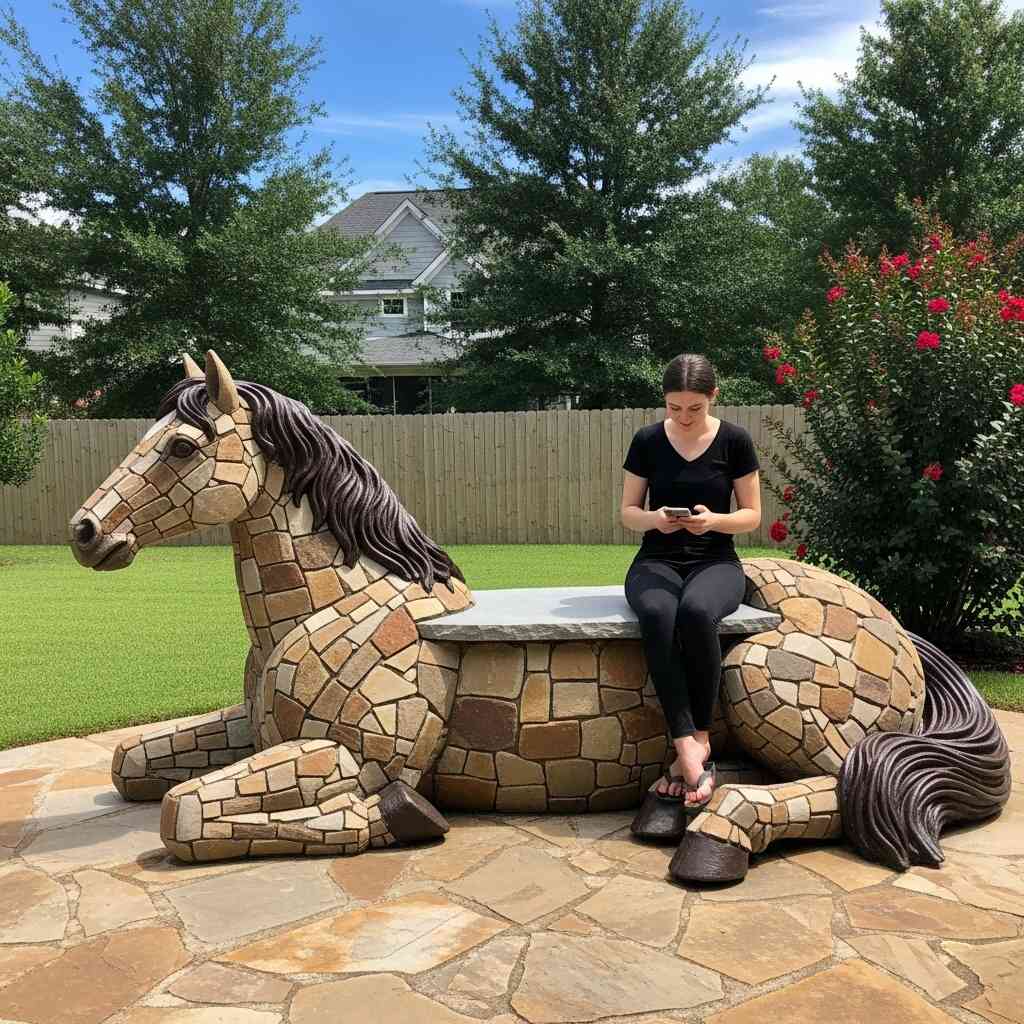
The Artistic Craftsmanship Behind Stone Animal Benches
Selecting the Right Stone
Creating animal benches made from stone begins with the careful selection of raw material. Natural stone varies widely in texture, color, hardness, and workability. Common choices include granite, limestone, sandstone, and marble, each offering distinct characteristics that influence the final appearance and durability of the bench.
Granite, known for its hardness and resistance to weathering, is ideal for outdoor installations where longevity is essential. Limestone and sandstone, though softer and easier to carve, offer a more rustic, earthy look that complements natural landscapes. Marble, with its smooth finish and elegant grain, is often reserved for indoor or sheltered settings where protection from the elements is assured.
The choice of stone also affects the carving process. Harder stones require specialized tools and greater effort, while softer varieties allow for finer details and intricate textures. Regardless of the type, the goal is always to harmonize the material with the intended form, ensuring that the bench not only lasts for generations but also resonates with those who encounter it.
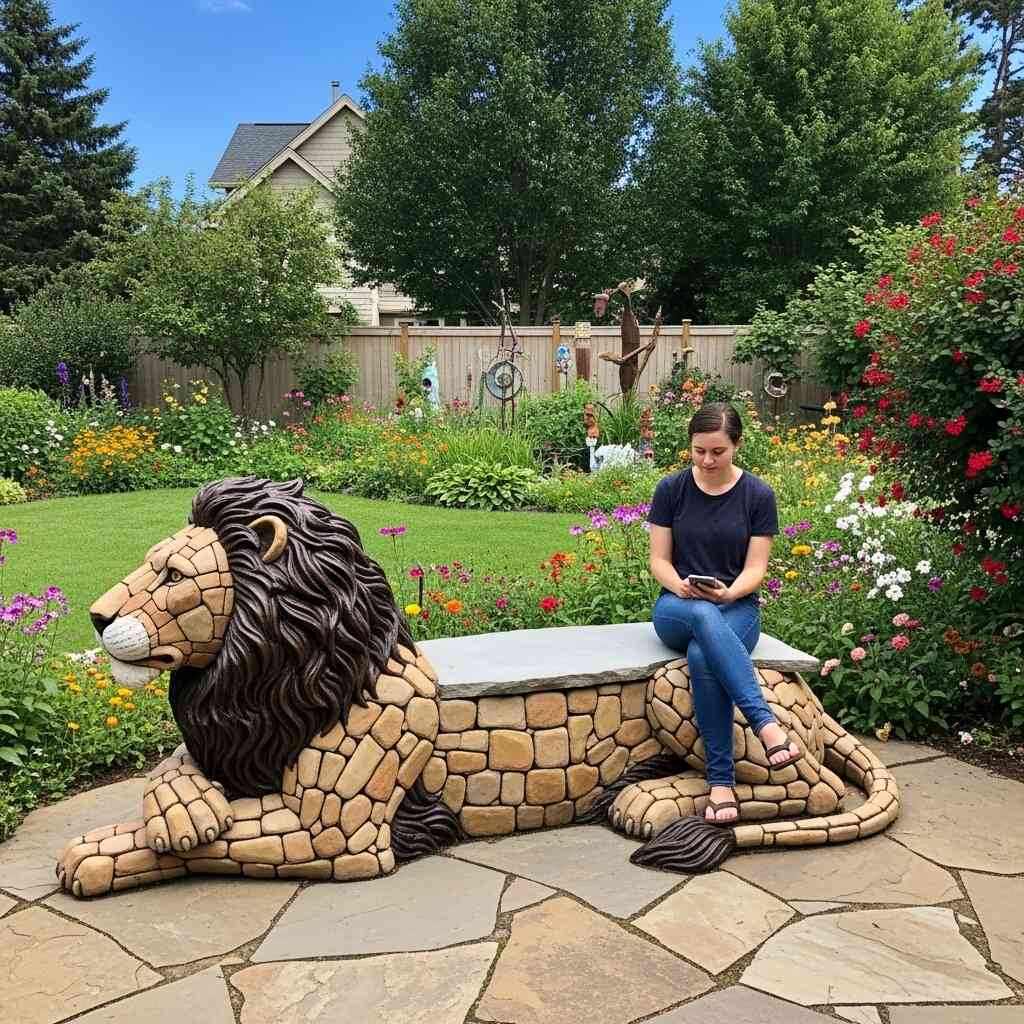
Techniques of Stone Carving
The creation of animal benches made from stone is a labor-intensive process that demands both technical skill and artistic vision. Traditional hand-carving techniques involve chisels, mallets, and rasps, allowing artisans to shape the stone gradually and intuitively. More modern methods may incorporate pneumatic tools, diamond-tipped saws, and even computer-aided design (CAD) software to assist in planning and precision.
Regardless of the tools used, the process typically follows several stages:
- Design and Planning : Before any carving begins, the artist sketches the desired form, considering proportion, balance, and functionality. The animal subject is chosen based on context—whether it represents local wildlife, mythology, or personal symbolism.
- Rough Shaping : Large chunks of excess stone are removed to create the basic outline of the animal and the bench structure. This stage requires strength and control, as mistakes can be costly.
- Detailing : Once the general shape is established, the artisan focuses on refining features such as facial expressions, fur patterns, claws, and musculature. This phase is crucial for bringing the piece to life and imbuing it with character.
- Finishing Touches : The final step involves smoothing surfaces, adding texture where needed, and polishing the stone to enhance its natural beauty. Some artists choose to leave certain areas rough-hewn to emphasize the organic quality of the work.
Each bench is a one-of-a-kind creation, bearing the signature style of its maker and the inherent uniqueness of the stone itself.
Blending Form and Function
One of the most remarkable aspects of animal benches made from stone is how they marry form and function. Unlike purely ornamental sculptures, these benches must support weight and provide comfort. This dual role presents a challenge for the artist: how to maintain structural integrity while preserving the expressive qualities of the animal form.
For example, a bench shaped like a crouching tiger must still offer a stable, flat surface for sitting. A dragon coiled around a pillar needs to be sturdy enough to withstand environmental pressures without compromising its dynamic pose. Achieving this balance requires a deep understanding of anatomy, ergonomics, and material behavior.
Moreover, the placement of the bench within its surroundings plays a vital role in its impact. A fox-shaped bench nestled in a woodland clearing creates a sense of harmony with the environment, while a lion perched atop a hilltop commands attention and authority. The interplay between the bench and its setting enhances the viewer’s experience, making the artwork feel like a natural extension of the landscape.
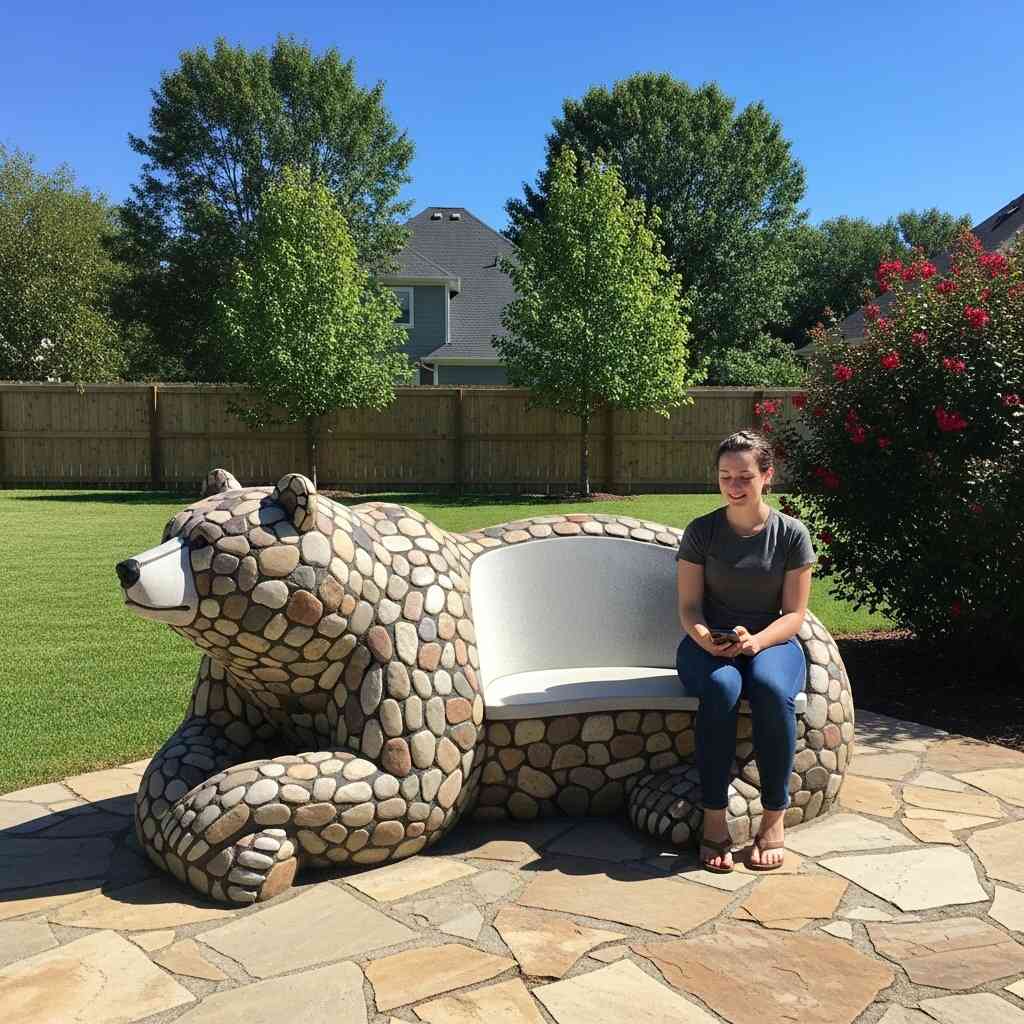
Cultural and Emotional Significance of Stone Animal Benches
Connection to Nature and Wildlife
At their core, animal benches made from stone embody our enduring relationship with the animal kingdom. They serve as reminders of the creatures we share the planet with, celebrating their presence even in urban environments where wildlife may seem distant. Each bench tells a story—of a particular species, its habitat, and its symbolic meaning across different cultures.
In many indigenous traditions, animals are seen as spiritual guides or ancestral beings. A bench carved in the likeness of a raven might evoke the trickster spirit of Native American lore, while a turtle bench could symbolize longevity and wisdom in East Asian philosophy. These connections deepen our emotional engagement with the artwork, transforming a simple seat into a vessel of cultural memory.
Even in secular contexts, animal benches foster a sense of kinship with nature. Children delight in discovering a frog or owl bench tucked away in a park, while adults may find solace in the quiet companionship of a stone dog or deer. These interactions, however fleeting, encourage mindfulness and appreciation for the living world around us.
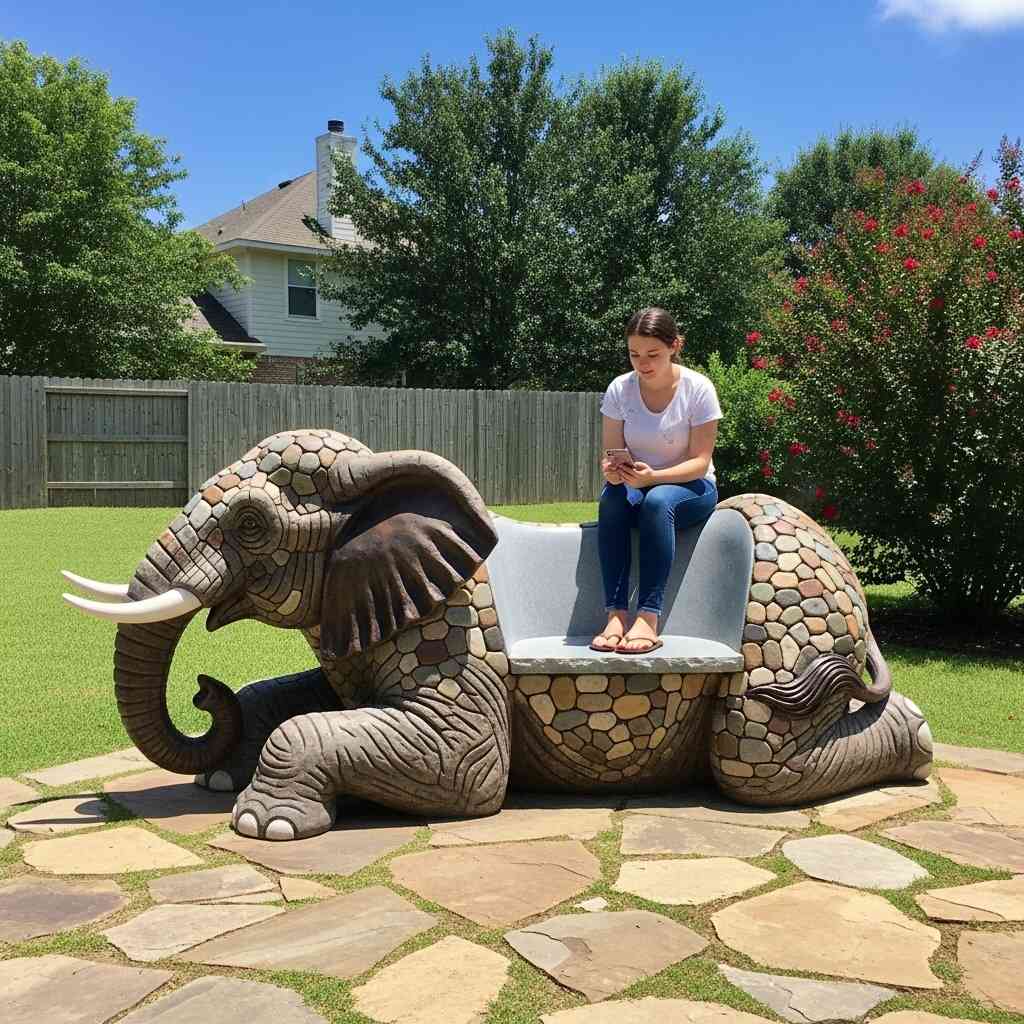
Storytelling Through Sculpture
Sculpture has long been a medium for storytelling, and animal benches made from stone are no exception. Every curve, posture, and expression contributes to a narrative that unfolds over time. A bear rearing on its hind legs might suggest power and vigilance, while a pair of dolphins leaping side by side could symbolize friendship and unity.
Public art installations often use themed sets of animal benches to convey broader messages. For instance, a series depicting endangered species can raise awareness about conservation efforts, subtly educating visitors while inviting reflection. In educational settings such as botanical gardens or museums, these benches become interactive learning tools, sparking curiosity and dialogue among all age groups.
Additionally, some benches are created as memorials or tributes, honoring beloved pets, community figures, or historical events. These deeply personal works carry emotional weight, becoming cherished sites of remembrance and connection.
Community Identity and Shared Spaces
Beyond individual interpretation, animal benches made from stone contribute to the identity of shared spaces. They act as focal points in parks, campuses, and town centers, encouraging social interaction and communal ownership. People often return to familiar benches, forming attachments that transcend their utilitarian function.
These benches also promote inclusivity. Their universal themes—animals, nature, playfulness—are accessible to diverse audiences regardless of language, culture, or background. A child from any country can recognize a bird or butterfly carved in stone, making these artworks inherently welcoming and unifying.
Furthermore, when communities participate in the design or commissioning of stone animal benches, they foster a sense of collective pride. Public art initiatives involving local schools, artists, and residents ensure that the benches reflect the values and heritage of the people who live among them.
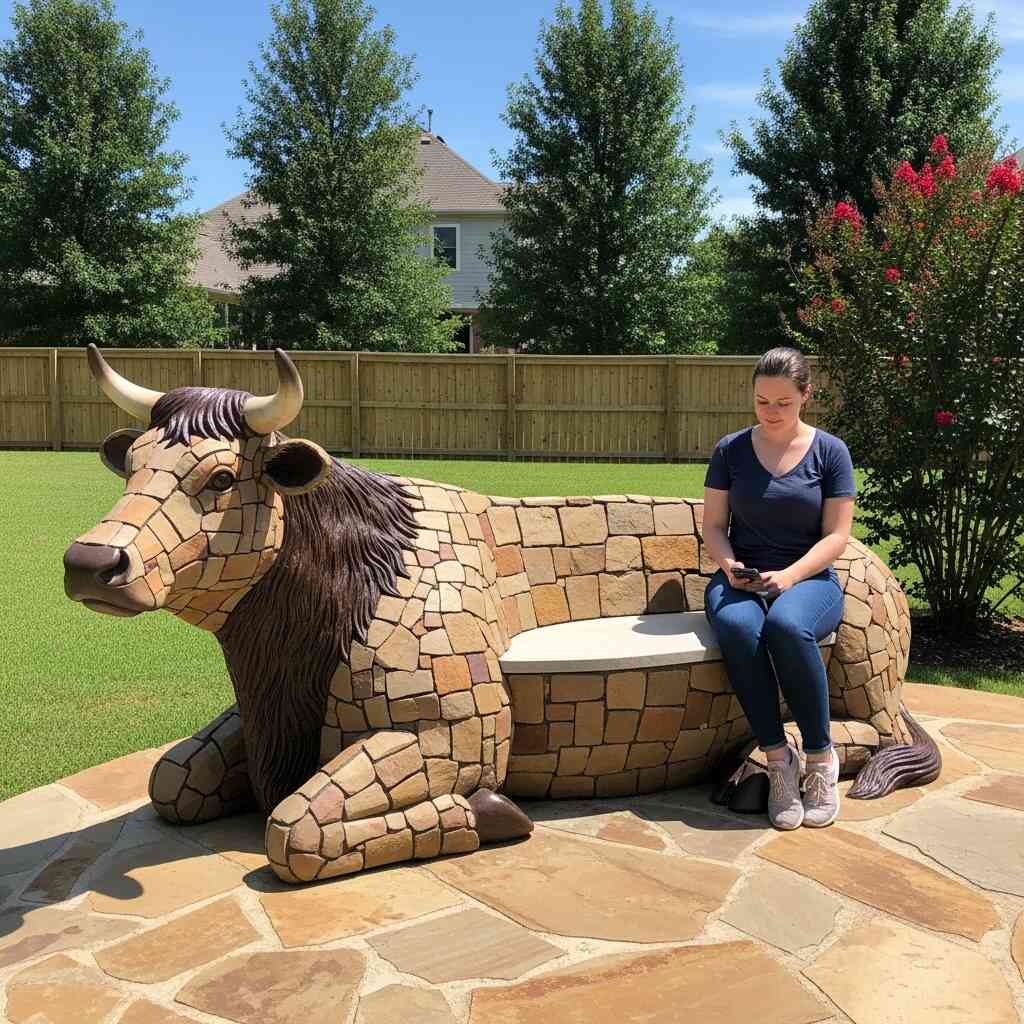
Environmental Harmony: Stone Benches as Symbols of Sustainability
In an era increasingly defined by environmental awareness, animal benches made from stone offer more than aesthetic pleasure—they embody principles of sustainability and ecological mindfulness. Unlike mass-produced furniture that may degrade over time or contribute to landfill waste, stone benches are enduring creations that age gracefully within their surroundings. Their longevity not only reduces the need for replacement but also reinforces a philosophy of permanence and respect for material resources.
Natural stone is one of the most sustainable materials available for outdoor installations. It requires minimal processing compared to synthetic alternatives, and when sourced responsibly, it has a relatively low environmental footprint. Many artisans choose to work with locally quarried stone, reducing transportation emissions and supporting regional economies. The durability of stone ensures that these benches can withstand the elements—rain, wind, sun, and frost—without warping, rusting, or deteriorating, making them ideal for long-term placement in public spaces.
Moreover, the integration of animal forms into stone seating fosters a sense of environmental stewardship. These benches serve as gentle reminders of the biodiversity that surrounds us, encouraging viewers to consider their role in preserving natural habitats. A bench shaped like a fox nestled in a forest clearing or a sea turtle resting along a coastal path becomes a quiet advocate for conservation, prompting reflection on the delicate balance between human development and wildlife preservation.
In many ways, animal benches made from stone are living artifacts—pieces of art that grow more meaningful with time as nature and culture continue to evolve around them. Lichen may settle into the crevices of a carved deer, moss might soften the edges of a lion’s mane, and birds may perch upon the back of a sculpted owl. These organic interactions transform the bench into a dynamic part of the ecosystem rather than a static object placed within it.
Philosophical Dimensions: Reflections on Presence, Stillness, and the Human Condition
Beyond their physical and environmental attributes, animal benches made from stone invite philosophical contemplation. They exist at the intersection of stillness and motion, permanence and impermanence, nature and human intervention. Sitting upon such a bench becomes more than a momentary pause—it can be a meditative experience, a chance to align oneself with the rhythms of the earth.
The very act of sitting implies a willingness to slow down, to observe, and to engage with the present moment. In contrast to the hurried pace of modern life, where movement often dominates our daily routines, these benches encourage introspection. Whether placed beside a pond, atop a hill, or beneath the shade of a tree, they offer sanctuaries for thought, conversation, or solitude.
There is also a symbolic power in choosing to rest upon a creature carved from stone. The juxtaposition of human presence atop a representation of the animal kingdom evokes questions about hierarchy, kinship, and interdependence. Are we above nature, or simply a part of it? Does the stone beast beneath us offer protection, companionship, or a silent commentary on our place in the grand scheme of existence?
Philosophers and poets have long drawn inspiration from the natural world, and these benches provide a tangible link between abstract thought and physical experience. A person seated upon a stone tortoise may ponder the virtues of patience and resilience; someone resting against the flank of a carved elephant might reflect on wisdom and memory. Each animal carries its own symbolism, offering layers of meaning that deepen the emotional resonance of the space.
Furthermore, the permanence of stone contrasts with the transience of human life. While people come and go, the bench remains—a witness to countless conversations, moments of joy, and passing seasons. In this way, animal benches made from stone become repositories of collective memory, silently holding stories within their carved forms.
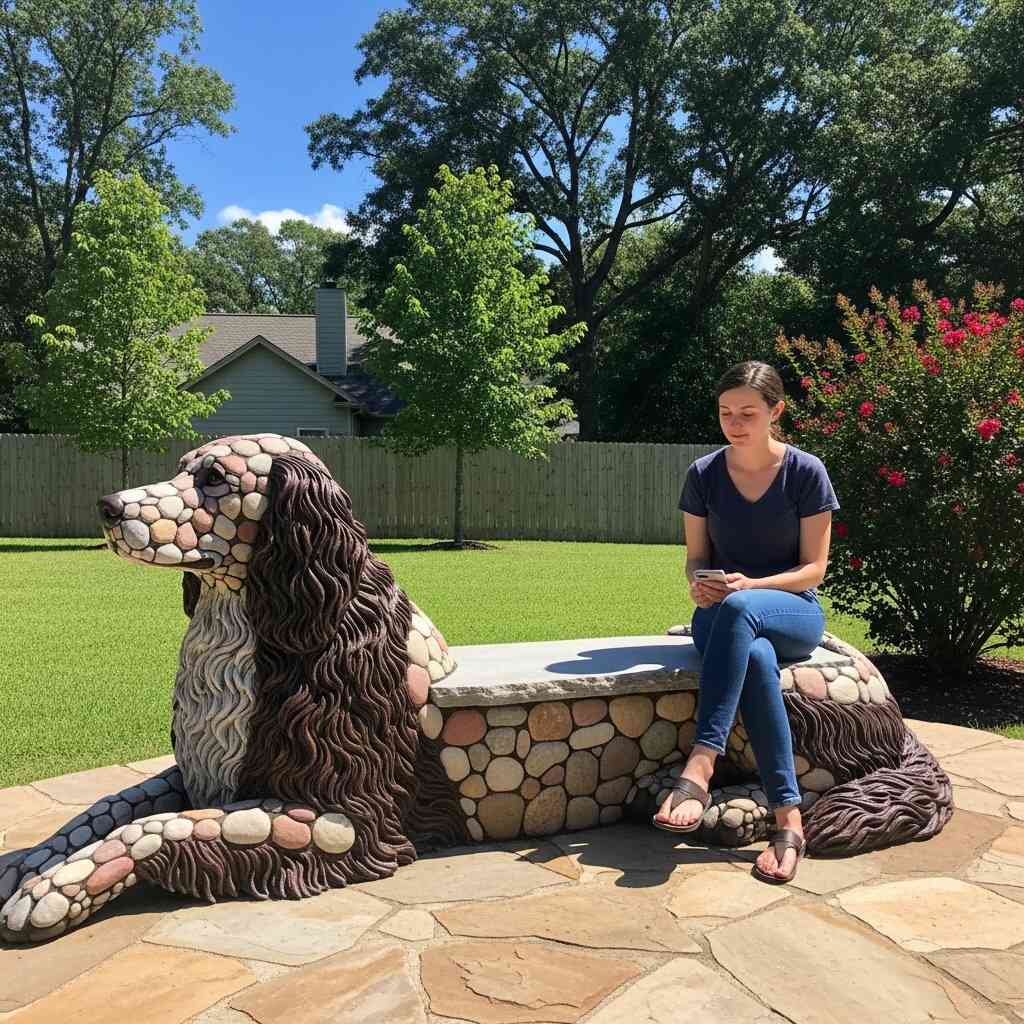
Educational Value: Inspiring Curiosity and Learning Through Art
One of the lesser-discussed yet profoundly important roles of animal benches made from stone is their capacity to educate and inspire. Especially in settings such as botanical gardens, zoos, nature reserves, and school campuses, these benches serve as interactive learning tools that spark curiosity across generations.
Children, in particular, are naturally drawn to animals, and encountering a frog-shaped bench or a bear-themed seat in a park can ignite their imagination. Such experiences often lead to spontaneous discussions about the characteristics of the depicted animal, its habitat, behavior, and conservation status. Parents, teachers, or guides can use these opportunities to impart knowledge about biodiversity, ecology, and the importance of protecting wildlife.
In educational institutions, animal benches made from stone can be strategically placed near relevant subject areas—for example, a dinosaur bench near a geology department or a bird bench outside a biology building. These placements reinforce learning through visual association, making abstract concepts more tangible and memorable.
Museums and historical parks sometimes incorporate interpretive signage alongside these benches, providing context about the species represented, the cultural significance of the design, or the artistic process behind the carving. These signs turn the bench into an informal classroom, blending aesthetics with education in a way that is accessible and engaging.
Even without formal interpretation, the presence of these benches encourages observation and inquiry. Viewers may begin to notice subtle details—the texture of feathers carved into marble, the play of light across the curves of a stone wolf, or the anatomical accuracy of a leaping gazelle. Over time, repeated encounters with such artwork cultivate a deeper appreciation for both nature and craftsmanship.
The Role of Community Engagement in Shaping Stone Animal Benches
While individual artists often create these benches, the process of bringing them to life frequently involves community participation. Public art initiatives centered around animal benches made from stone can foster civic pride, encourage local involvement, and strengthen social bonds.
Community-driven projects may include collaborative design workshops where residents contribute sketches or ideas for the animal motifs. Schools might partner with sculptors to allow students to assist in minor carving tasks under supervision, offering hands-on exposure to traditional crafts. Fundraising efforts involving local businesses, clubs, or neighborhood associations can ensure that the final installation reflects shared values and aspirations.
Such participatory approaches make the benches more than just functional sculptures—they become symbols of collective identity. A town may commission a series of benches representing native animals, each installed in a different district to celebrate local heritage. A university campus could feature a menagerie of creatures symbolizing academic disciplines or institutional history.
These community-focused endeavors also help preserve artisanal traditions. As digital fabrication becomes more prevalent, hand-carved stone benches remind us of the irreplaceable value of skilled craftsmanship. By involving younger generations in the creation process, communities ensure that these techniques are passed down, keeping cultural legacies alive.
Moreover, once installed, these benches often become gathering points for storytelling, festivals, or seasonal celebrations. They anchor communal experiences, becoming part of the landscape’s narrative and the memories of those who interact with them.
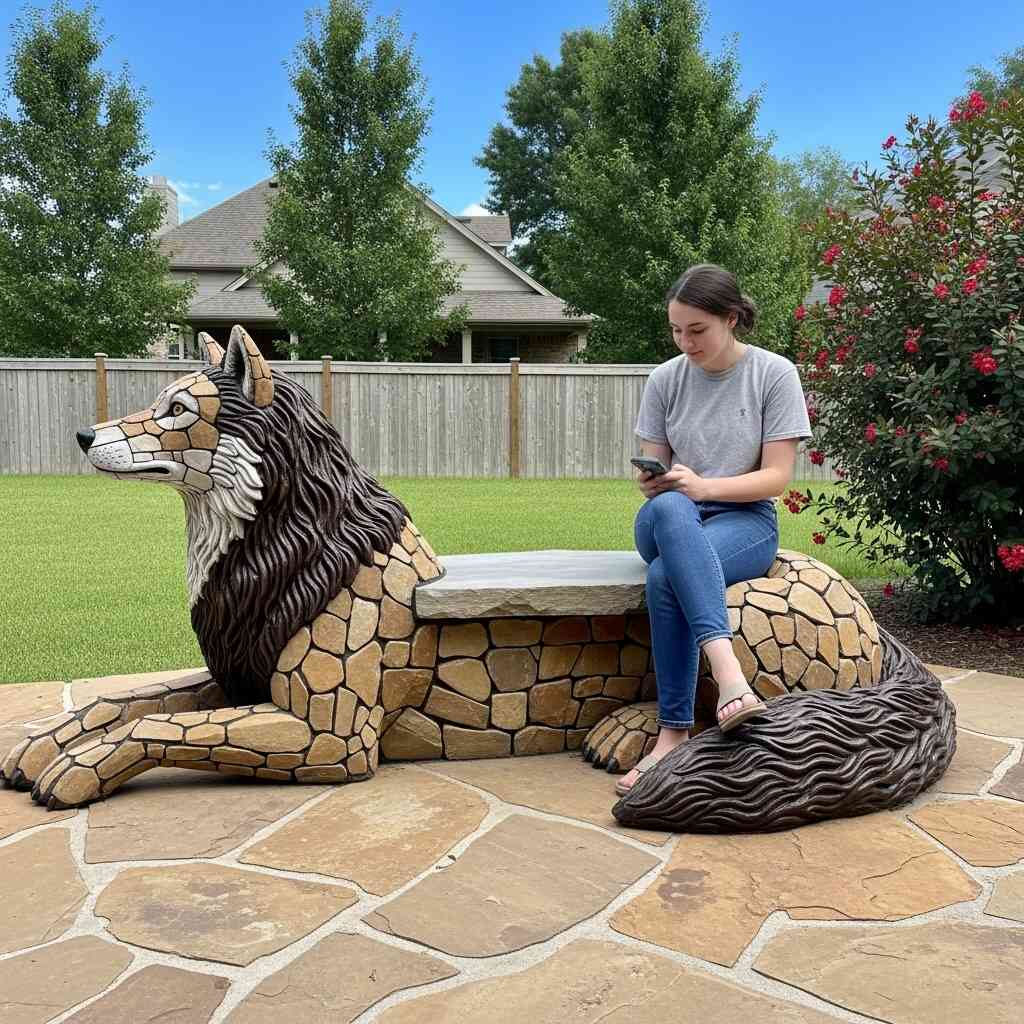
Conclusion
Animal benches made from stone stand as enduring testaments to the fusion of nature and sculpture. They bridge the past and present, tradition and innovation, utility and artistry. From their ancient origins to their modern-day incarnations, these benches continue to captivate and inspire, reminding us of the profound connection between human creativity and the natural world.
Through meticulous craftsmanship, thoughtful design, and cultural resonance, each stone animal bench becomes more than just a place to sit—it becomes a landmark, a storyteller, and a guardian of shared memories. Whether encountered in a bustling city square or a quiet forest glade, these sculptures invite us to slow down, observe, and reconnect with the timeless rhythms of nature.
In a world increasingly dominated by technology and fast-paced living, animal benches made from stone offer a rare opportunity to pause and reflect. They remind us that art need not be confined to galleries or museums; it can exist in the everyday, woven into the fabric of our public spaces, waiting to surprise and delight those willing to notice. As long as there are hands to carve and hearts to appreciate, the legacy of these stone-carved wonders will endure, enriching the landscapes and lives they touch.


